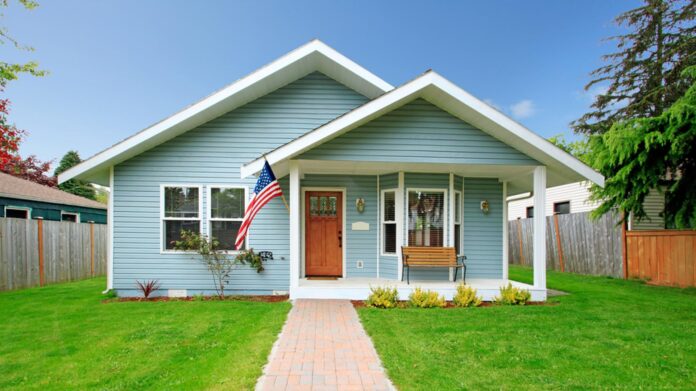It’s definitely time to update our thinking about “starter” homes in the face of scant shortages of available “starters” to buy, inflated prices, and institutional investors.
First-Time Homebuyers Bearing Brunt of Shortages, Prices & Competition
Smaller, relatively inexpensive homes where young buyers used to think they’d begin their home-owning years barely exist today. The few starters that do exist are picked up in days, usually in cash by institutional investors so they can either rent it out or fix-and-flip that home for a profit.
Reminder it’s the New Year. You promised yourself you would become a HARRIS Coaching client. You are done wasting time and want to follow a proven path in 2022. Now, while you are here make the next natural step and join the 1000s of other agents as a HARRIS Real Estate University coaching member. No more waiting or procrastinating. Join now. Here is the quick and simple enrollment.—-> YES, Enroll Me Now In Premier Coaching. I WiLL make 2022 my best year ever!
In the last two and a half years alone, according to the National Association of REALTORS® (NAR), the average price of a starter home increased from $233,400 in 2019 to $307,400 by the end of 2021. Average monthly mortgage payments on a starter home increased from $1,038 to $1,224 within this same time frame.
Sure, wages and salaries have gone up during this time frame (+4.5% in 2021) but not nearly as much as housing prices and costs have skyrocketed.
“New” Starters Have “New” Definitions & Requirements of First-Time Buyers
Terry Hendricks, an agent with Dallas-based RE/MAX DFW Associates, said, “We have to redefine what a starter home is. The ship has sailed and it’s not coming back.”
Just like starter houses have new definitions, first-time buyers now belong to different demographic groups and have different financial requirements. For example, the median age of a first-time buyer was 32 in 1981…today, according to NAR, the median age of a first-time buyer is 45.
The median income requirement for first-time buyers was $80,000 in 2020. In 2021, that $80,000 became over $86,000…in one year!
Now What?
While in the midst of redefining starter homes, some agents say a starter home typically has approximately 1,500 square feet with two or three bedrooms. And some agents say that ideally, a starter home is move-in ready so first-timers can move in seamlessly and easily.
A problem with the word “ideally” in this new definition is that “ideal” starter homes rarely exist. Another problem with a new “starter” definition is the size of 1,5000 square feet. 1,500 square feet no longer cuts it in our present-tense world of remote working and remote learning. And, of course, an additional problem in redefining starter homes is redefining the buyers. In the present-tense world of institutional investors, most first-time buyers who haven’t equity from selling a prior home simply can’t compete.
One possible outcome to this question of “now what” may be that single-family homeownership is becoming past-tense along with “1,500 square feet” and “move-in ready.”
RE/MAX’s Hendricks said, “What I’m seeing now is that more people than ever will be renting…renting will be something that’s much more essential than buying…and we’re going to see more investors come into the market and replace first-time buyers.”
Starter homes need first-time buyers, right? Without first-time buyers, can starter homes even exist?
An important question for you. 2022 is here…have you completed your 2022 Real Estate Business and Lead Generation Plan? If not, no worries. We have done the hard work for you. Download your 2022 REAL ESTATE TREASURE MAP! Text HARRIS to 47372. It’s that simple and takes 3 seconds. Text HARRIS to 47372 and when you do we will instantly text you back with a link to download. BONUS: For a limited time when you text HARRIS to 47372 you will also receive a Coaching Call!
4 Msgs/Month. Reply STOP to cancel, HELP for help. Msg&data rates may apply. Terms & Privacy: slkt.io/JWQt
Thanks to the National Association of REALTORS® and Inman.
























